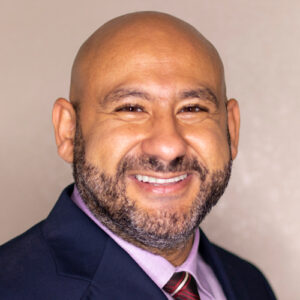The keys to optimizing revenue cycle management for your dental group.
By Dr. Tarek Aly, BDS, MBA – Co-Founder, Chief Operating Officer, Orthodent
Refining and tweaking processes is an endless journey for entrepreneurs and business owners. While we are trying to stimulate growth in our organizations, it’s going to take some digging and adjusting on the part of the business leader to get to the heart of the issue. This is especially true for anything related to finances, which is why dental practices should be establishing a revenue cycle management process within their systems.
What is revenue cycle management? It’s the process where you are converting every single dollar that walks through your door into real cash that can go into your bank account. I like to think of the money that comes through the front doors of your practice as “Monopoly money” – it isn’t real until it actually hits the bank. Revenue cycle management is the process that takes the money you are bringing in and puts it in your bank.
My good friend Emmet Scott has a saying that I love – “We’re not really doing billing, we’re not really doing revenue cycle management. What we’re doing is preventing fraud, waste and abuse.” Revenue cycle management can’t be patched haphazardly; this is a critical pillar of your organization that must be done right to be successful.
Measuring the right KPIs
Measuring appropriate key performance indicators is essential to the success of any revenue cycle management program. Whatever needs to be changed first has to be measured with scientific data about your practice.
Key performance indicators show us that what we’re seeing is not perception, but reality. You could claim to have the best billing department in the whole world, but the data could tell a different story. Likewise, you could claim that you have the worst billing department in the whole world, and the data could tell you the opposite. The only real and accurate judgement of quality is with numbers.
Track KPIs like collection to productions ratio, adjustments to production ratio, days of sales outstanding, aging to production ratio, etc. There will be some variations based on where you are, so don’t forget to take geographical factors into account. Your payer mix will make a difference as well: practices high in Medicaid patients will have different results than those who have a high number of PPO patients.
Establishing standard operating procedures
To truly get your organization started on the right foot, whether you are implementing revenue cycle management or not, you need to establish standard operating procedures for your entire team. While it might look different person-to-person and role-to-role, everyone on your team needs a set of standard operating procedures to understand the parameters they should operate in.
Establishing standard operating procedures will unify the efforts of your entire team, aligning their work towards a common goal: operational success. The revenue cycle management process needs standard operating procedures to ensure that all your finances – incoming and outgoing – are being documented promptly and accurately.
Not only will standard operating procedures align the work of your team to the goals of your company, but it will also ensure that any new team members coming in will know the expectations and processes required to work with your organization. Speaking from experience, once we standardized how things were done, errors went down significantly. Without the proper protocols in place, it’s very possible that your hard-earned money is going straight out the door.
There are 5 main phases of Revenue Cycle Management:
1. Eligibility Verification. Data gathered from a standardized form called “incoming patient information sheet” is used to start the verification process, usually a couple of days prior to the patient coming in.
2. Claims Submission. When the patient comes to the practice, we will take care of the procedure, whether it’s hygiene or a treatment, and we must make sure that whatever done clinically is correctly documented in the chart and in the ledger. Then the claims are batched and sent to the clearing houses.
These charts and ledgers must be accurate and up to date to make sure that your doctors and your organization is in compliance. A huge part of that is making sure that the doctors are making accurate and clear notes to properly document every step. Without that documentation, you risk not meeting the standards of the industry. Non-compliance is a huge risk to your organization and your entire team, so it’s critical that all of this information is accurate and up to date.
3. Explanation of Benefits (EOBs) processing. Once the insurance company verifies your claim, they issue a check attached to an explanation of benefits sheet. At this phase, your team logs the payments made to reconcile with the patients’ accounts and handles denied claims with the insurance companies.
It is advised to opt in to an Electronic Funds Transfer (EFT) option to receive your money quicker electronically and to have a documentation of the EOB that lives on the cloud forever.
4. Aging Analysis & Rectifying. This is the crucial stage where we analyze the reasons the patient accounts have aged. This data is used to create a preventative process to avoid the issues from happening in the first place. An aging analysis report is advisable to make this data consumable.
5. Auditing. A system without an audit is like a speed sign without enforcement by the traffic police. Your system will have little value without the proper audits and follow up.
Remember that you cannot improve what you cannot measure, and you cannot measure what you cannot define. Work on your KPIs, systems, and processes, and don’t forget to audit them. You don’t have to be great to start, but you have to start to be great.
Tarek Aly practiced Dentistry and Periodontal surgery for years while simultaneously working in Management and Marketing. His expertise includes M&As, Business Valuation, Human Resource Management, Business Operations, Dental Organizations Management, and Dental Support Organizations platform development and management. He is currently the Chief Operations Officer/Co-founder of OrthoDent Management LLC.






